 Very often people are concerned about problems with the gastrointestinal tract. And in order to solve them, it is necessary to clean the intestines from various toxins.
Very often people are concerned about problems with the gastrointestinal tract. And in order to solve them, it is necessary to clean the intestines from various toxins.
For this purpose, special preparations have been created, called laxatives.
Laxatives are divided into several groups:
- means irritant receptors of the small and large intestine;
- means softening feces( olive oil);
- drugs that have a mechanical effect on the intestines( magnesium);
- group of laxatives, acting on the absorption of liquid in the intestines
Laxatives have a very wide range of application and mechanism of action. But the task for all laxatives is the same - to strengthen the intestinal motility and as soon as possible to remove stool from the gastrointestinal tract.
Bisacodyl refers to the fourth group of drugs, that is, it acts on the absorption of fluid in the intestine. I want to note that the drug is synthetic, which can cause allergy in some people.
The drug is available in the form of tablets, coated with a shell for oral administration and rectal suppositories. The only difference between the drug and various pharmacological plants is the dosage of the active substance, which can be five, ten, fifteen milligrams in one tablet.
Content
- Pharmacological action
- Pharmacokinetics
- means Indications
- Contraindications to the use of the drug
- dosage regimen and dosing
- Side effects
- overdose and first aid
- Interaction with alcohol and other drugs
- Practical application
- Expert opinion
- The voice of the people
- Tipson reception from patients
- Where to buy and how to store?
Pharmacological action
In the mucosa of the large intestine, there are nerve endings, regulated by the autonomic nervous system, so a person not 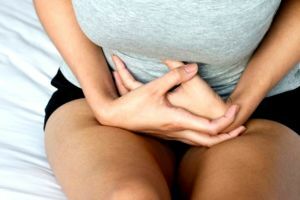 is able to manage peristalsis on his own.
is able to manage peristalsis on his own.
Under normal physiological conditions in the large intestine, water, vitamins( synthesized by lacto and bifidobacteria) and other oxidized and processed substances are absorbed. Bisacodyl has a compound called Diphenylmethane in its chemical structure.
After penetrating the lumen of the large intestine, diphenylmethane begins to interact with the nerve receptors and endings, after which the reverse process begins in the gut. That is, mucus instead of being absorbed into the capillaries, begins to enter the lumen of the large intestine, thereby "washing out" toxins, bacteria, foreign bodies.
During some infectious diseases of the gastrointestinal tract, our body begins in this way to "expel" the infection, an ideal example is salmonellosis, cholera.
Pharmacokinetics of the drug
Some physiologists and pharmacists claim that Bisacodyl does not have the property of being adsorbed( absorbed) in the gastrointestinal 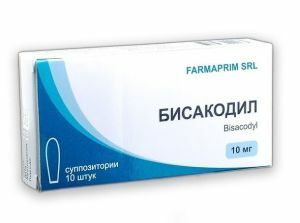 tract and leaves it unchanged, as irritating nerve endings - adsorption is impossible.
tract and leaves it unchanged, as irritating nerve endings - adsorption is impossible.
However, according to the latest data, the drug can still be absorbed into the blood, because during the acid-reduction processes in the lumen of the large intestine and in interaction with lacto and bifidobacteria the structure of the chemical compound changes, which makes absorption possible.
In this case, the drug enters the liver and kidneys, and is finally excreted in the urine. After getting into the liver through the portal vein, which comes from the mesentery of the large intestine, it transforms and loses its properties, but it has a toxic effect on the liver.
When transformation in hepatocytes ends, the drug is rendered harmless and harmless to the brain, heart, lungs.
Then circulating in the blood enters the kidneys, where it passes through the walls of nephrons and is subsequently excreted in the urine. For the kidneys, the drug is not toxic - but it is very difficult to remove.
Indications for use
Bisacodyl is prescribed for various forms of constipation, namely:
- atonic - impaired intestinal nerve regulation when there is no peristalsis, for example, after surgery on the abdominal organs or the effects of muscle relaxants on the body;
- is hypotonic , constipation associated with insufficient intestinal motility.
In addition to constipation, Bisacodyl is used to adjust the stool in the case of:
- hemorrhoids;

- proctitis;
- cracks in the anus.
The medical staff of the functional diagnostic rooms, uses a laxative before radiology:
- of the stomach;
- of the duodenum;
- of the small intestine;
- of the large intestine.
Bisacodyl is part of the group of drugs used for premedication, before surgery on the organs of the abdominal cavity.
Contraindications to the use of the drug
Contraindications to the use of any laxative are acute inflammation of the abdominal cavity:
- intestinal obstruction;
- strangulated hernia in the region of the umbilical ring, diaphragm, groin;
- diffuse peritonitis;
- bleeding from the abdominal organs( stomach, spleen, small or large intestine);
- liver injury;
- acute period of hemorrhoids.
In addition, the use of the tool is prohibited:
- in case of hypersensitivity to the drug;
- for infants;
- with acute daggerache in the abdomen of an unknown origin;
- if there are diseases of the kidneys and liver in an acute period.
The drug has a chemical structure that can penetrate the transplacental barrier, and also during lactation in milk. Therefore, women who are breastfeeding and pregnant should not use the drug.
Dosage and Administration Scheme
The use of Bisacodyl is standard for all laxatives in this group:
- is taken 30 minutes before meals;
- throughout the treatment course it is necessary to consume a large amount of water, since dehydration of the body and loss of salts occur, it is recommended to use the regidron to restore water-salt metabolism;
- must adhere to strict dosage compliance.
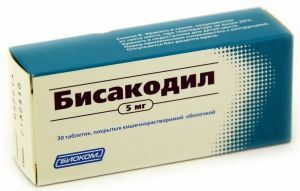 Dosage for adults is about 15 mg of active ingredient per day, which means that you need to drink 3 tablets, at a dosage of 5 mg - before breakfast, lunch, dinner.
Dosage for adults is about 15 mg of active ingredient per day, which means that you need to drink 3 tablets, at a dosage of 5 mg - before breakfast, lunch, dinner.
In the case of preparation for functional research methods, about four tablets are prescribed for knocking over three days. Do not forget to restore the water-salt balance!
Children between the ages of two and eight years - the daily dose is 5 mg. That is, one second tablet, twice a day. For children older than eight years, the dose is 10 micrograms per day. You can consume the drug for no more than 10 days or as directed by a doctor.
Bisacodyl suppositories are administered rectally to a small depth 2-3 times a day, previously lubricating the anus with glycerin.

Side effect of
After taking the drug, patients may be troubled:
- abdominal pain;
- drop in blood pressure;
- diarrhea( on the basis of dehydration of water);
- accumulation of gases in the intestine.
Overdose and first aid
In case of an overdose, a person's blood pressure decreases, the skin turgor, loss or confusion decreases. In the case of these 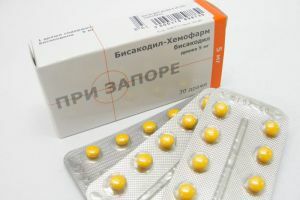 symptoms, it is necessary:
symptoms, it is necessary:
- discontinue use of the product;
- to drink adsorbents( activated carbon, Fosfalugel);
- start using Regidron or make a rehydration solution( in one liter of water place six teaspoons of sugar and one spoonful of salt);
- consult a doctor.
Interaction with alcohol and other drugs
Bisacodyl can be consumed in combination with all drugs and do not worry for their interaction, however, simultaneous use with alcohol is forbidden, since an unstable compound that can cause harm to health is formed.
Do not drink milk or alkaline water( lemon, soda solution).
Practical experience of application of
Reviews of doctors and patients who practice Bisakodil.
Expert opinion
I have long been prescribing the drug to patients before surgery, because it is very well tolerated in contrast to laxatives of plant origin and has fewer contraindications and side effects.
Sergey Valerievich, 58
I've been working as a therapist for 7 years. I prescribe the drug to the elderly, since the vegetative laxatives no longer give the proper effect. As a doctor, I advise taking as "heavy artillery", since the drug from this group is the last thing.
King Alexander, the therapist
A voice from the people
I was very worried for a long time with atopic constipation and a constant enema bored me. When I started taking Bisacodyl, then ten days later the constipation disappeared and did not bother me for about two years. I suffer from hypertension, so the side effect of reducing blood pressure went to my advantage, so I immediately got rid of two "rabbits".
Elena Pavlovna
I have long been familiar with this drug, I used it when I was young, when there were problems with the digestive tract. After reception, I forgot what hypotonic constipation is.
Valerik
Tips for receiving from patients
It is best to take the drug before eating, as I decided to experiment and took after, but I never achieved the desired effect.
I also used it for the night, but two hours after a meal, and in the morning I could calmly go to the toilet.
Where to buy and how to store?
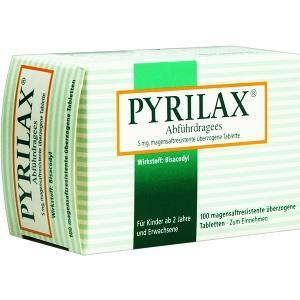 The drug is sold without a prescription in any pharmacy. Does not require special storage, the shelf life is three years. The price of Bisacodyl is about thirty-five rubles per package, and in it about twenty tablets.
The drug is sold without a prescription in any pharmacy. Does not require special storage, the shelf life is three years. The price of Bisacodyl is about thirty-five rubles per package, and in it about twenty tablets.
Analogues: Bisadil, Dulcolax, Demolaxin, Pyrilax, Videx, Spirolax, Laxadin, Eulaxan.
In medical practice, the drug is used very often to prepare for the patient before surgery. A minus is the long duration of the desired result, therefore in urgent cases it is not applied.
Also not prescribed by pediatricians, because it can be poorly tolerated by children, because of its synthetic basis.
Store the drug in a dark, cool place. Before use, check the expiration date. To carry out the purchase of the drug in licensed pharmaceutical institutions.
